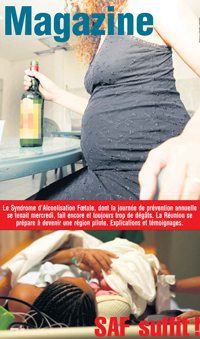Estimation of national, regional, and global prevalence of alcohol use during pregnancy and fetal alcohol syndrome: a systematic review and meta-analysis.
Svetlana Popova, Shannon Lange, Charlotte Probst, Gerrit Gmel, Jürgen Rehm
Summary
Background Alcohol use during pregnancy is the direct cause of fetal alcohol syndrome (FAS). We aimed to estimate the prevalence of alcohol use during pregnancy and FAS in the general population and, by linking these two indicators, estimate the number of pregnant women that consumed alcohol during pregnancy per one case of FAS.
Methods We began by doing two independent comprehensive systematic literature searches using multiple electronic databases for original quantitative studies that reported the prevalence in the general population of the respective country of alcohol use during pregnancy published from Jan 1, 1984, to June 30, 2014, or the prevalence of FAS published from Nov 1, 1973, to June 30, 2015, in a peer-reviewed journal or scholarly report. Each study on the prevalence of alcohol use during pregnancy was critically appraised using a checklist for observational studies, and each study on the prevalence of FAS was critically appraised by use of a method specifi cally designed for systematic reviews addressing questions of prevalence. Studies on the prevalence of alcohol use during pregnancy and/or FAS were omitted if they used a sample population not generalisable to the general population of the respective country, reported a pooled estimate by combining several studies, or were published in iteration. Studies that excluded abstainers were also omitted for the prevalence of alcohol use during pregnancy. We then did country-specifi c randomeff ects meta-analyses to estimate the pooled prevalence of these indicators. For countries with one or no empirical studies, we predicted prevalence of alcohol use during pregnancy using fractional response regression modelling and prevalence of FAS using a quotient of the average number of women who consumed alcohol during pregnancy per one case of FAS. We used Monte Carlo simulations to derive confi dence intervals for the country-specifi c point estimates of the prevalence of FAS. We estimated WHO regional and global averages of the prevalence of alcohol use during pregnancy and FAS, weighted by the number of livebirths per country. The review protocols for the prevalence of alcohol use during pregnancy (CRD42016033835) and FAS (CRD42016033837) are available on PROSPERO.
Findings Of 23 470 studies identifi ed for the prevalence of alcohol use, 328 studies were retained for systematic review and meta-analysis; the search strategy for the prevalence of FAS yielded 11 110 studies, of which 62 were used in our analysis. The global prevalence of alcohol use during pregnancy was estimated to be 9.8% (95% CI 8.9–11.1) and the estimated prevalence of FAS in the general population was 14.6 per 10 000 people (95% CI 9.4–23.3). We also estimated that one in every 67 women who consumed alcohol during pregnancy would deliver a child with FAS, which translates to about 119 000 children born with FAS in the world every year.
Interpretation Alcohol use during pregnancy is common in many countries and as such, FAS is a relatively prevalent alcohol-related birth defect. More eff ective prevention strategies targeting alcohol use during pregnancy and surveillance of FAS are urgently needed.
Funding Center for Addiction and Mental Health (no external funding was sought).
Copyright ˝ The Author(s). Published by Elsevier Ltd. This is an Open Access article under the CC BY-NC-ND license.
www.thelancet.com/lancetgh Published online January 12, 2017 http://dx.doi.org/10.1016/S2214-109X(17)30021-9



